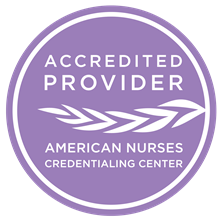Everything you put into a legal nurse consulting report should be there for one purpose and one purpose only – to inform your attorney-client of the information necessary to win or settle the case. Every opinion, every paragraph, every table, every reference should serve that purpose.
I’ve asked the CLNC® Pros to share their best practices for writing reports. Attorney-clients are more likely to call on you again and again for reports if you follow these 17 strategies:
- Identify the attorney’s preferences
The attorney-client may not always know what he needs, but often before you provide what you know the attorney needs you may have to first give him what he thinks he needs. Inquire about the intended purpose of the report and any preferences for format and length. Establish whether the attorney wants a brief or more comprehensive report. This will accomplish two things in advance:- You can more easily judge the format (chronology, narrative, etc.) and amount of detail required for the report.
- You and your attorney-client both know what is being requested, which decreases the risk of providing an unwanted, unnecessary or surprise work product to an attorney.
CLNC consultant, Connie Chappelle, RN, MN, CLNC shares “I want to provide exactly what the attorney-client wants so he doesn’t have to wade through unwanted information. This also saves me time. If I think an attorney will benefit from additional information, I propose my idea and the attorneys are usually receptive. I also keep communication open throughout my involvement to ensure I provide exactly what the attorney client wants and needs.”
- Keep it real
Assess how much medical knowledge and experience the attorney has with similar cases. Assessing the attorney’s medical knowledge guides you in knowing how much you need to translate the medical record, medical terminology and disease process. For example, if an attorney handles a large number of failure-to-diagnose myocardial infarction (MI) cases, you may not have to include an extensive discussion about anatomy or physiology because the attorney is already familiar with this information. Instead, tailor this portion of the report to the specific case issues regarding this specific MI. Conversely, if an attorney does not have extensive medical malpractice experience with MI cases, you may devote a section of the report to a review of anatomy and physiology, disease process and current treatment protocols. Don’t assume the attorney knows how this information applies to the case. Always explain how it applies to the case the attorney is representing. Jane Hurst, RN, CLNC adds “Medicine is not the attorney’s native language. The attorney is often only knowledgeable of the relevant medicine in the case because of the report we provide. Attorneys are very receptive to teaching. They want to understand the medicine because it makes them more effective.” - Do your research before you start writing
Review applicable standards of care and scientific references and identify the sources you will use before drafting the report. This time-saving procedure helps you organize your thoughts and determine where to include the relevant resource material. - Recycle your research from other reports for greater efficiency
Depending on the type of case, you may be able to re-use sections from previous legal nurse consulting reports prepared for similar cases. For example, in two cases involving delay in diagnosis of myocardial infarction, the standards you applied to the first case may be relevant to the second case. Review your other reports on similar cases to determine if any of the material applies to your current case before starting the report. Of course, there is no “one size fits all” approach to report writing. Each case must be analyzed individually, but occasionally, you may be able to avoid duplicating your effort and research. - Study and model LegalNurse.com’s Medical-Related Case Reports
This helps you to easily battle any procrastination urges as you learn to smartly conceptualize your own legal nurse consulting reports. Use and study the Medical-Related Case Reports the same as you study the Core Curriculum for Legal Nurse Consulting®. Model the variety of formats and the depth of the analysis used by other Certified Legal Nurse Consultants and me. Pattern phrases and apply them to your own cases. These models involve different specialties and incidents, so you’ll find a wealth of information to draw from. And yes, these are real reports written for real attorneys in real cases. - Create an outline to ensure you cover all important issues
Outline your opinions as well as your plan for presenting them. A comprehensive report includes some or all of the following:- Cover letter or email to the attorney.
- Title page or cover sheet.
- Table of contents.
- Services requested.
- List of records, documents and items reviewed and examined to date.
- Issues.
- Bottom-line opinion and case theme.
- List of significant players.
- Summary of the case facts and relevant information.
- Scientific theory and summary of research and standards.
- Specific deviations from and adherences to the standards of care (malpractice cases only).
- Possible defenses.
- Injuries sustained.
- Causation analysis.
- Potential arguments for opposition and how to respond.
- Missing records or evidence of tampering.
- Problems with the case for plaintiff and defense.
- Definitions of medical terminology in simple terms and interpretation of abbreviations.
- Recommendations for additional discovery.
- Recommended types of experts.
- Summary of testifying experts’ opinions.
- Follow-up questions.
- Recommendations for additional CLNC services and necessary attorney action.
- Conclusion.
- Reference list of authoritative texts, standards and publications.
- Abstracts and copies of relevant articles and standards.
- Present the facts chronologically
The events occurred in a chronological order. Your report should reflect the same. Jane Hurst adds “Tell an organized story. Have a beginning, middle and end. The result will be a report that not only educates, but also makes sense, keeping the attorney oriented to the timing of the events.” - Apply a systematic approach for entering data to keep chronologies reliable
Even a small error in date or time can influence the rest of your report. To minimize such costly typos, enter data from one complete section of the record before moving on to another section. For example, enter relevant nursing and vital sign entries because these data are usually dated and timed and occur more frequently than entries by other healthcare providers. Then, enter relevant lab report data in the appropriate order before moving on to radiology reports. Then place physician’s progress notes and orders (often, untimed) based on the chronology you have already created. In putting the pieces of the puzzle together in this fashion, you may identify other important issues to address in your evaluation and report. - Customize the report format to meet the attorney-client’s needs
Avoid using the same format and length for each and every case. You may wind up including information that is not cost effective or relevant. Instead, write a report that meets your attorney-client’s needs and presents the information in the most logical manner. - Include only relevant information
CLNC consultant Jane Hurst emphasizes “Just because information is in the record does not mean it belongs in your report. Determine if the information is relevant. If it is not, don’t include it. Do not send a 30-page report when it can be distilled into 10 pages. The attorney will appreciate your report if you’re to the point. I have several clients who like a one-page summary for non-meritorious cases. It can be a challenge, but it forces you to think about what is pertinent and what is fluff.” - Break up the topics
Break up long paragraphs. Stick to one topic per paragraph, just like your English teacher taught you. - Use lists to communicate a sequence of items
To make groups of related points clear, use bulleted lists. If the sequence of items is important, number the list instead of using bullets, e.g., number a sequence of steps that came or should come in order. - Format consistently throughout the report
Refer to dates and times consistently. LegalNurse.com standard is the mm/dd/yy format – i.e., March 5, 2019 is formatted 03/05/19. - Clarify medical terms and abbreviations
Define medical terms and abbreviations on the spot v in a glossary at the end of the report. This is the preferred practice. Whenever you use an abbreviation for the first time, unless you’re absolutely sure your attorney-client is familiar with it (e.g., MD, RN), spell out the term then put the abbreviation in parentheses – for example, advanced cardiac life support (ACLS). Then on subsequent uses of the term, you can simply use the abbreviation. Most acronyms can be formatted without periods. You’re so familiar with many medical acronyms, you don’t even notice them, but if your attorney-client has to stop and look up a term or puzzle it out, he won’t appreciate your wasting his time. CLNC consultant, Marcia Bell, RN, BSN, CAPA, CLNC shares “I define all terms in my reports whether or not the attorney asks for them. Vickie’s advice of giving a little extra in each report to ‘wow’ the attorney has been proven true many times.” - Correctly shorten units of measure
Use consistent notation for units of measurement throughout the report. In general, abbreviations for units of measurement do not require periods (unless they’re used at the end of a sentence), nor do they require adding an “s” for the plural. For example, 1.5 cc, 0.5 mg, 127 lb (not 127 lbs), etc. - Set the report aside
If time allows, put the report aside for one or two days before doing final proofreading and editing. Check the report for overall continuity and format. Review each paragraph for content and relevancy. Be sure you deliver what you promised. Finally, analyze each sentence for grammar, proper placement and always check spelling. Certified Legal Nurse Consultant, Jane Hurst affirms “There is nothing worse than reading a professional report with spelling and grammar errors. If you are in doubt of the way a word is used, or you have grammar questions, there are many free online websites that can answer your questions.” Before you submit your final report, go back over your notes and the original letter from your attorney-client. What did the attorney ask for? Did you include this information? Make sure it’s all there in the final draft. - Send a cover email and confirm receipt of the report
If the report is comprehensive, be sure to include a cover email introducing the report, restating your assignment briefly, summarizing your bottom-line opinion, and conclude by thanking the attorney-client and offering to provide additional CLNC services on this or future cases. Submit the report in PDF format so no one on the other end can alter it. CLNC consultant, Marcia Bell describes “More than once, I have emailed a report and later received a call from the attorney requesting it. While I was able to forward the email proving that I met the deadline I’ve since become more diligent about confirming receipt of delivery.”
Your legal nurse consulting report will linger in the case file long after your meeting with your attorney-client. It may travel to other attorneys within the firm and even to other law firms. What type of first (and sometimes, only) impression are you leaving with your attorney-clients and potential future clients? Make every report the best ever by implementing these 17 best practices.
Thanks to the CLNC Pros: Marcia Bell, Connie Chappelle and Jane Hurst for sharing best practices for creating memorable legal nurse consulting reports.
Success Is Yours,
P.S. Comment and share your best practices for creating memorable legal nurse consulting reports.








